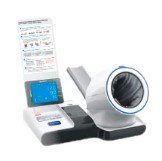Enhancing Patient Understanding and Engagement Through Communication Techniques in Phlebotomy
Summary
- Clear communication during phlebotomy procedures can help patients understand the process and feel more engaged in their healthcare.
- Building rapport and trust through effective communication can improve patient comfort and cooperation during blood draws.
- Empowering patients with information and involving them in decision-making can lead to better health outcomes.
Introduction
Phlebotomy is a crucial aspect of medical laboratory procedures, involving the collection of blood samples for diagnostic testing. Effective communication techniques used during phlebotomy procedures can have a significant impact on patient understanding and engagement in their own healthcare. This article will explore the importance of clear communication in phlebotomy and how it can enhance the overall patient experience.
The Importance of Effective Communication in Phlebotomy
Clear and effective communication is essential during phlebotomy procedures for several reasons:
Building Rapport and Trust
Establishing a positive rapport with patients is crucial for ensuring their cooperation and comfort during blood draws. By using clear and compassionate communication, phlebotomists can build trust with patients, leading to a more positive overall experience.
Reducing Anxiety and Discomfort
Many patients experience anxiety or fear during blood draws, which can lead to increased discomfort and potential complications. By explaining the procedure in detail and addressing any concerns, phlebotomists can help alleviate patient anxiety and minimize discomfort.
Empowering Patients
Clear communication during phlebotomy procedures can empower patients with information about their healthcare. By explaining the purpose of the blood draw, discussing potential Test Results, and involving patients in decision-making, phlebotomists can help patients take an active role in managing their health.
Effective Communication Techniques in Phlebotomy
Phlebotomists can employ several communication techniques to enhance patient understanding and engagement in their healthcare:
Active Listening
Listening carefully to patients' concerns and questions can help phlebotomists address any fears or uncertainties they may have. By actively listening, phlebotomists can demonstrate empathy and create a supportive environment for patients.
Clear Explanation
Providing clear and detailed explanations of the phlebotomy procedure, including what to expect during and after the blood draw, can help patients feel more informed and prepared. Phlebotomists should use simple language and avoid medical jargon to ensure patient comprehension.
Encouraging Questions
Encouraging patients to ask questions and voice any concerns they may have can help clarify misunderstandings and alleviate anxiety. Phlebotomists should create a safe space for patients to communicate openly and address any fears or worries they may have.
Impact on Patient Understanding and Engagement
Effective communication techniques used during phlebotomy procedures can have a positive impact on patient understanding and engagement in their healthcare:
Enhanced Understanding
Clear communication can help patients better understand the purpose of the blood draw, the significance of the tests being performed, and any potential health implications. This understanding can lead to greater compliance with follow-up care and treatment recommendations.
Increased Engagement
By involving patients in the decision-making process and empowering them with information, phlebotomists can increase patient engagement in their own healthcare. Patients who feel informed and supported are more likely to take an active role in managing their health and following through with treatment plans.
Improved Health Outcomes
Empowering patients through effective communication can lead to improved health outcomes. When patients feel heard, respected, and well-informed, they are more likely to adhere to medical advice, seek follow-up care, and proactively manage their health conditions.
Conclusion
Effective communication techniques used during phlebotomy procedures play a crucial role in enhancing patient understanding and engagement in their own healthcare. By building rapport, reducing anxiety, and empowering patients with information, phlebotomists can create a positive and supportive environment for patients during blood draws. Ultimately, clear communication can lead to improved patient outcomes and a more positive healthcare experience overall.

Disclaimer: The content provided on this blog is for informational purposes only, reflecting the personal opinions and insights of the author(s) on the topics. The information provided should not be used for diagnosing or treating a health problem or disease, and those seeking personal medical advice should consult with a licensed physician. Always seek the advice of your doctor or other qualified health provider regarding a medical condition. Never disregard professional medical advice or delay in seeking it because of something you have read on this website. If you think you may have a medical emergency, call 911 or go to the nearest emergency room immediately. No physician-patient relationship is created by this web site or its use. No contributors to this web site make any representations, express or implied, with respect to the information provided herein or to its use. While we strive to share accurate and up-to-date information, we cannot guarantee the completeness, reliability, or accuracy of the content. The blog may also include links to external websites and resources for the convenience of our readers. Please note that linking to other sites does not imply endorsement of their content, practices, or services by us. Readers should use their discretion and judgment while exploring any external links and resources mentioned on this blog.
